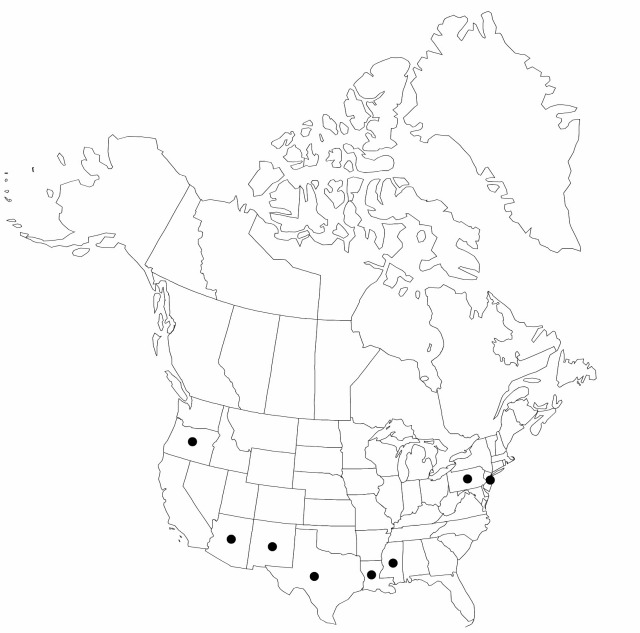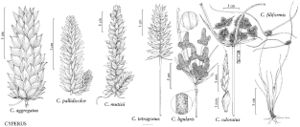Cyperus aggregatus
Cat. Horti Vindob. 1: 93. 1842.
Herbs, perennial, cespitose, rhizomatous. Culms trigonous, 20–100 cm × 0.8–2.5 mm, glabrous. Leaves 5–10, V-shaped to flanged V-shaped, 10–70(–90) cm × 2–7 mm, margins and midribs scabridulous or glabrous. Inflorescences: spikes 1(–6), densely cylindric, 6–30 × 5–11 mm; rays 3–12, 0.4–5(–7) cm; rays and rachis glabrous; usually only 1–2 spikes of inflorescence on elongate rays, other spikes sessile or nearly so; bracts 4–7, horizontal to slightly ascending, 1–16 cm × 0.5–4 mm; rachilla deciduous, wings persistent, 0.5 mm wide. Spikelets 20–80, ellipsoid, roughly quadrangular, 3–5 × 1–1.4 mm; floral scales 1–2(–4), appressed, stramineous to golden brown, often red-speckled, medially greenish, 9-ribbed, elliptic to ovate, 2.4–3.4 × 1.8–2.6 mm, apex obtuse. Flowers: anthers 0.4–0.6 mm; styles 0.7–1.1 mm; stigmas 1.4–2.1 mm. Achenes dark brown to reddish brown, sessile, broadly ellipsoid, 1.8–2.1 × 0.8–1 mm, apex apiculate, surfaces glabrous to finely puncticulate.
Phenology: Fruiting mid summer–fall (Jul–Oct).
Habitat: Dry roadsides, pastures, thickets
Elevation: 0–500 m
Distribution

Introduced; Ariz., La., Miss., N.J., N.Mex., Oreg., Pa., Tex., Mexico, Central America, South America, Australia.
Discussion
The records of Cyperus aggregatus in New Jersey, Oregon, and Pennsylvania represent introductions from ballast.
The closely related Mexican and Central American Cyperus regiomontanus Britton has been collected once as an adventive or waif in southern California. It is distinguished from C. aggregatus by its silvery green, subulate-lanceolate spikelets and achenes that are only 0.4–0.6 mm wide.
Selected References
None.
